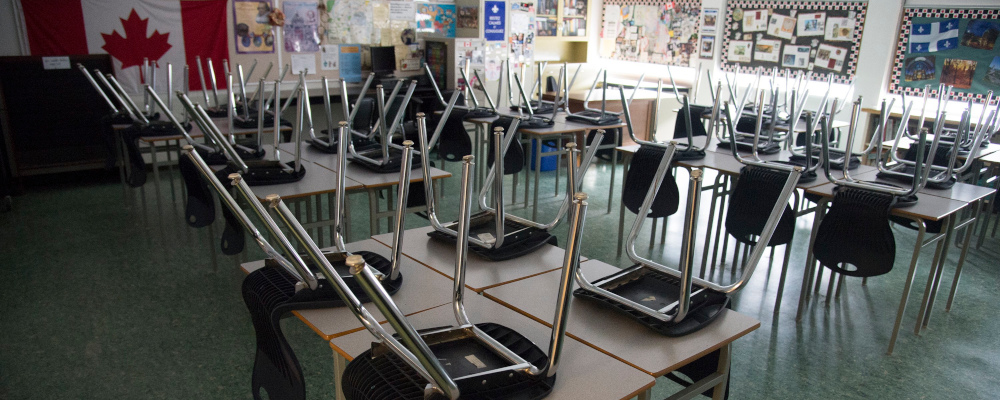This week in Hub Forum, readers discussed many topical and pertinent issues, including the role of international students in keeping institutions afloat, how American culture wars are reflected in Canadian reporting, the increase in businesses going bankrupt and the lack of new ones emerging, and the rising trend of student absenteeism.
The goal of Hub Forum is to bring the impressive knowledge and experience of The Hub community to the fore and to foster open dialogue and the competition of differing ideas in a respectful and productive manner. Here are some of the most interesting comments from this past week.
Sign up for our daily Hub Forum email newsletter today.
Are international students keeping Canadian universities afloat?
Monday, January 22, 2024
“I remember having this discussion when I was a student decades ago, and there were a LOT of people who felt that because International students were paying double for tuition than what local students were paying that they were indeed keeping Canadian universities afloat. Many felt that international students were also ‘favoured’ because they paid more.”
— Mark
“The major issue is that the boards of so many of our institutes of higher learning are spending on programs and departments that have no marketable value. The boards need to start getting rid of wasted resources so that expenses are in line with revenues.”
— Vance Petersen
What a U.S. culture war story tells us about Canadian media
Tuesday, January 23, 2024
“If race and gender are accepted considerations and are in fact celebrated, it raises the possibility that someone attained their position at least in part due to their ‘identity.’ It can put the question in peoples’ minds and is a disservice to those who achieved their position by merit.”
— Gord Edwards
“Perhaps it has always been thus, but there seems to be an erosion of principles, specifically having them, let alone adhering to them, when the demands of one’s tribe are felt or other costs are required. This seems to be the case at the personal, institutional, and societal levels.”
— Paul Attics
The (one hundred) million dollar question: What is a journalist?
Wednesday, January 24, 2024
“If one looks at the video, the approach of Mr. Menzies to Chrystia Freeland seems rude and a little scary, and this accounts for some of the reaction. However, I would think this goes with the territory as she may not be otherwise available to him. Perhaps the latter is the main question: to what extent do publications with opposing viewpoints have access to government policy-makers in Canada?”
— Karen Quinton
“The secret sauce for the salvation of the industry is not secret. Listen to your audience, have a discussion with them and not a lecture, and talk about what they think is important, not what your colleagues or the special interest groups and nonprofits that clog up your inbox focus on.”
— Hugh Nicholson
“In a healthy and democratic society, the market for effective journalism would likely also be healthy. Sure, disingenuous agenda journalists and attention-mongers would ply their trade, but their audience would be commensurately small.
However, in a society in which many fellow citizens feel unheard, scared, disrespected, and ultimately angry, the market for journalism will be unhealthy as people with this chronic state of mind are more likely to want what panders to these feelings. This quickly becomes a flywheel of negativity, distrust, and falsehood as agenda journalists are rewarded with more and more attention by their tribe. This, of course, becomes an opportunity for disingenuous attention-mongers to also ply their trade successfully to bigger and bigger audiences. Their goal is only attention for monetary gain and personal power reasons. Even worse, there are those whose real goal is to disrupt society. These folks are trying to bring it all down.
Our society is unhealthy, despite all our riches of peace and prosperity, and our citizenry is increasingly spending attention on bad actors. We are all the worse for it.”
— Paul Attics
Business bankruptcies have soared. The bad news is many aren’t being replaced
Thursday, January 25, 2024
“In my opinion, which is shared by many other entrepreneurs, the banking system in Canada is one of the main barriers impeding the growth of new businesses. The risk tolerance of Canadian banks is so low, that a new business cannot get enough lift (financially speaking) to carry them to the stage where a bank would even consider offering a line of credit.”
— Greg Jackson
“In Canada, small business owners know that they can’t turn to the banks for help unless they are willing to pledge personal assets to secure credit. The banks here only want to help when you don’t really need it. So hence was born the idea that you go to the bank for money when you don’t need it because one day it may be needed and they won’t give it to you then.”
— Michael F

Is schooling becoming optional?
Friday, January 26, 2024
“There are laws on the books which school boards can use to ensure that parents have their children at school. It seems provincial authorities are loathe to use the laws they have. It is useless to talk about ‘back to basics’, as many provincial ministers of education are, and then not make sure that the students are in the classrooms. Unless students are convinced of the value of education early in life, it doesn’t stick later in life.”
— A. Chezzi
“Children are suffering from an alarming increase in anxiety-related conditions. The pandemic response made this worse, but it was already happening. Obviously, anxiety correlates with absenteeism, and, as such, an increase in the former means an increase in the latter.
Society, we have a problem.”
— Paul Attics
Recommended for You

Need to Know: Mark Carney’s digital services tax disaster

Sean Speer: Investing in critical minerals isn’t just good business, it’s a national security imperative

‘They’re voting with their eyeballs’: Sean Speer on the revealed preferences of Canadian news consumers

Kirk LaPointe: B.C.’s ferry fiasco is a perfectly Canadian controversy



